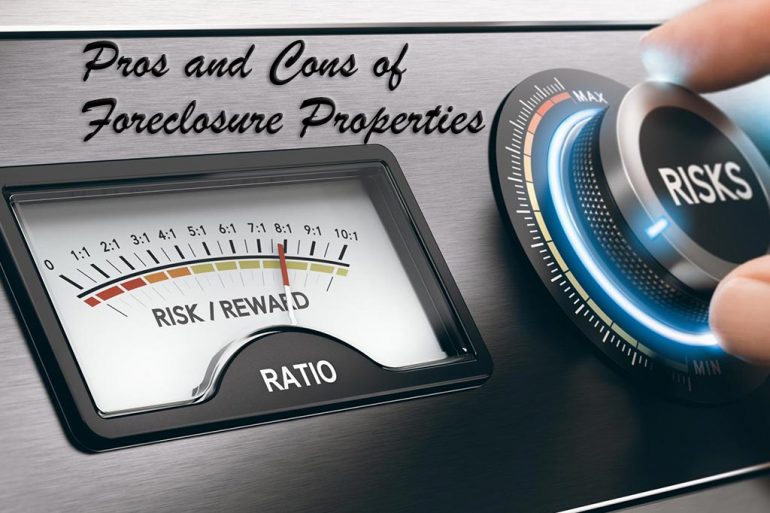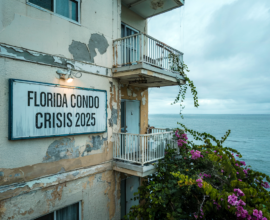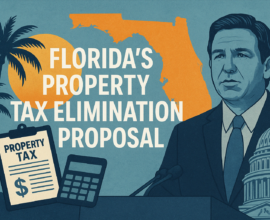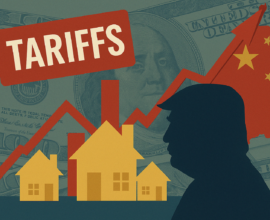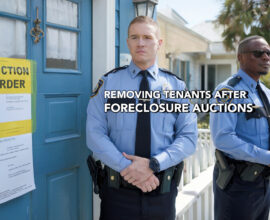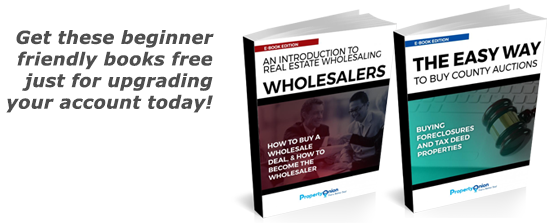Foreclosure Properties in South Florida: Pros and Cons
Foreclosure properties in South Florida present a wonderful opportunity for real estate investors, as this type of buyer is usually more willing to put in the time, effort, and money that’s required to bring a neglected property up to livable, salable condition. Foreclosure sales and auctions allow investors to secure a property at a price that may be significantly below market value. And with a bit of rehabbing, that piece of real estate can generate a tidy profit.
But as with all investment opportunities, the unique pros and cons of foreclosure properties mean that they aren’t a great fit for every investor. For this reason, it’s you’ll need to do plenty of research so you fully appreciate the potential stumbling blocks—and how to avoid them—as you seek out your next fix and flip or rental holding.
The Two Types of Foreclosure Properties: REOs
There are two basic types of foreclosure properties: REOs and auctions. Real estate owned (REO) properties are bank-owned properties that are placed on the market following a foreclosure. The plaintiff—better known as the lender or bank—takes possession of the home after the borrower (a.k.a., the defendant) defaults on the mortgage or voluntarily surrenders the property in a deed in lieu of foreclosure transaction. The bank typically holds the property for a period of time before placing it on the market; this time frame can range anywhere from a matter of weeks to several years.
REO properties are usually sold as-is, so generally, there’s little room for negotiation in terms of repairs. Although banks are typically a bit more flexible than a typical seller when it comes to negotiating other variables such as closing costs or closing time frame.
The primary downside to this type of foreclosure home is the price. REO properties are generally a bit more expensive than a comparable house that’s secured via a foreclosure auction. What’s more, the general public is free to make an offer on the property; that can drive up the price. But investors do have the opportunity to inspect the home prior to making an offer—that’s a major advantage, as you’ll have a chance to determine what repairs are necessary. This allows you to make an offer with confidence, as you’ll have a solid idea of rehab costs and your expected profit margin for that particular investment property.
REO properties may also be slow to close, depending upon the number of bank-owned properties that the lender currently has on the market. The time frame has shortened rather dramatically in recent years thanks to new legislation, but you may still need to wait a few weeks after formally making an offer. The response time can be even longer if there are multiple offers on the table.
The Two Types of Foreclosure Properties: Auctions
Auctions are the second method for acquiring a foreclosure property. Auctions are advantageous because a majority of the bidders are fellow investors. Foreclosure auctions are not listed on the MLS, which means you’ll have fewer competitors vying for that property. This generally leads to lower sale prices, which translates into a greater profit margin.
In the case of a foreclosure auction, the primary downside surrounds the inability to inspect the property prior to placing your bid. But an experienced real estate investor can often identify signs of costly problem by simply inspecting the exterior and chatting with neighbors. What’s more, the low pricing generally allows for a much greater profit margin, so there’s a fair bit of wiggle room when it comes to rehabbing costs. Virtually all online bidding portals require a deposit before you can bid and the winner typically needs to pay cash for the property. That said, it’s relatively rare for an investor to get a traditional mortgage loan, so the “cash only” requirement generally isn’t an issue for the serious real estate investor. Fortunately for investors, relatively few homebuyers are prepared to pay cash so there’s less competition for foreclosure auctions.
In fact, there are very few lenders who will issue a mortgage for a foreclosure property that’s in need of significant rehabbing work. The Federal Housing Administration and Freddie Mac are amongst the small pool of organizations that will issue a loan for low-value real estate that requires significant repairs and upgrades. Limited financing opportunities place a large portion of foreclosures beyond the reach of typical homebuyers. That’s good news for investors, who commonly use private hard money lenders if they lack sufficient working capital.
Additional Considerations When Buying a Foreclosure Property in South Florida
Water damage and mold problems are two major considerations for investors who are looking at South Florida foreclosure properties. The incidence of mold and water damage becomes far more frequent in the year or two following a major hurricane. For this reason, it’s important that you examine the roof carefully to evaluate condition and if you’re permitted to enter the home, be extra vigilant when looking for signs of roof leaks and mold.
If you’re unable to enter the property—as is commonly the case for a foreclosure auction—use a pair of binoculars or a SLR camera with a zoom lens to get a close-up look at the roof with your contractor. If your contractor spots roofing problems and suspects the water barrier has been compromised, you should assume there is a fair amount of water damage and mold present. Crunch your numbers while working under this assumption. This ensures you don’t unknowingly obliterate your profit margin (plus, there’s a good chance you’ve overestimated the damage. If that’s the case, you’ll be delighted to learn that your profit margin is a bit larger than expected!)
South Florida was also the site of a housing boom that went belly-up about a decade ago. This resulted in thousands of vacant properties and a housing supply that far exceeded demand. The situation has improved dramatically in recent months, but there’s still a good chance that the foreclosure property you’re considering has been vacant for an extended period of time. This is good for rehabbing, as you can get started right away, but it also means the home is more prone to issues such as:
- Break-ins involving squatters and teens who are seeking a party spot;
- Theft of copper piping;
- Theft of appliances;
- Theft of fixtures and cabinetry;
- Theft of well and HVAC equipment;
Undetected water damage that has resulted in mold and collateral damage; and Vandalism and generalized property degradation. The only upside is that theft and damage can make the property less desirable to the typical homebuyer—especially when you consider that lenders are typically hesitant to issue a loan for a property that borders on “uninhabitable.” This can translate into fewer offers on the home and ultimately, a lower sale price. That spells a greater profit for you as an investor.
Tips as You Prepare to Buy Foreclosure Properties in South Florida
Consider these tips as you prepare to place an offer on the property:
- Get a preliminary title report to make sure the property is free of secondary liens and other such encumbrances.
- Make sure you have a contractor by your side when you inspect the property. Contractors are adept at spotting problems that the layman would fail to notice. This is particularly important if you’re unable to inspect the interior. A seasoned contractor will be far better equipped to identify problems by peeking through a window or closely examining the exterior.
- Chat with the neighbors, as they’ll give you a good idea of how long the property has been vacant. They can also offer insight into any recent storm damage, recent repairs or other serious issues that may be present inside the home. You may also gain some useful insight into the overall state of the neighborhood after chatting with a few residents.
You’ll also want to ensure you’re well-acquainted with the auction process if you’re going to be placing a bid. In fact, the most successful investors devise a solid bidding strategy to maximize their chances of securing property that proves to be a profitable investment.
Buying a bank-owned foreclosure property can be risky if you lack experience and insight. But with the right strategy and a cautious approach, you’ll be well on your way to acquiring a South Florida investment property that yields a healthy profit margin. Foreclosure properties in South Florida just can’t be beat!
